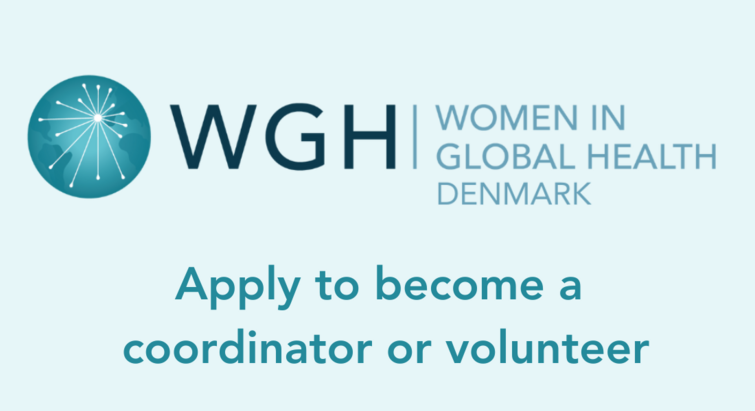
How to cope with ever rising pharmaceutical prices?
The impact of excessive prices of pharmaceuticals can be utmost severe. Not only can it result in inequality in access to health care, distortion of market competition and economic strain on health budgets, it can cost lives. Amid the COVID-19 pandemic, discussions on the cost of human lives versus sustaining healthy economies attract a lot of attention in the public debate. On top of this, the global crisis has created a window of opportunity for companies to gouge up prices on essential health care items yet again.

Text: Eibhlin Caimbeul / Pictures: Behrang Kianzad
In light of this latent debate, we have asked Behrang Kianzad, PhD-Fellow in Intellectual Property and Competition Law, Center for Advanced Studies in Biomedical Innovation Law (CeBIL), Faculty of Law, Copenhagen University, to enlighten us with insight into what he calls one of the most contentious issues in legal and political discourse – excessive pharmaceutical prices.
This article intends to provide clarification on this complex affair of “fair” pricing, one of the oldest legal and economic issues, and the necessary balancing between public demand for affordable and accessible health-care and the need for sufficient incentives and a sustainable innovation system in the field of medicines.
Renewed focus: Exploitation of desperate circumstances?

Kianzad describes how the COVID-19 crisis “has exposed price gouging of essential items, such as Personal Protective Equipment, during exceptional times once again”. He adds that “in many ways excessive pricing is the prime evil that needs to be corrected by competition law”.
Excessive pricing is not a recent phenomenon, and has been banned throughout recorded human history dating back from Jewish Halacha, the Bible, Islamic law, Roman law etc. Accordingly, it is currently prohibited by jurisdiction in all countries around the world – minus US, Canada, Mexico, Australia, and New Zealand.
The enforcement of competition law has witnessed renewed focus due to “state of art legal and economic science but also because of the recent emergence of real-life cases causing extreme price hikes in both the EU and the US adding undue pressure to already strained health budgets”, Kianzad informs when asked about the revitalisation of the issue.
Health spending accounts for an ever-larger piece of the pie
“The percentage of health spending relative to overall GDP is rising faster than overall GDP growth in the OECD, meaning that health spending accounts for an ever larger piece of the pie. We have further noted some dramatic, sudden price hikes of old, off-patent medicines, as well as ever-increasing price tags for some novel treatments” Kianzad explains.
He further elaborates by using an example from the National Health Service (NHS) in the United Kingdom, where “the sudden and dramatic increase in only one medicine increased the overall cost to the UK’s NHS from £500.000 to £70 million”.
Also, he describes how it increasingly affects the public health budgets in the EU: “the rate of expenditure on health as percentage of GDP in the EU increased from 6.1 percent in 1990 to 8.9 percent in 2013 and further to 9,6 in 2017”.
On the other hand, there has also been an increase in the cost of developing novel, life-saving drugs, and an increase in the need for sustainable research and development to bring these medicines to the market.
This raises the billion-dollar question: How is a “fair price” for a lifesaving, innovative medicine determined?
How are pharmaceutical prices determined?
To answer the abovementioned question, one needs to understand how prices of pharmaceuticals are determined in the first place. Therefore, we have asked Kianzad to clarify:
“Most countries in the EU have a single-payer system, with rather small out of pocket costs for the end-patients. The prices are set by national pricing authorities, using health technology assessment methodology among other metrics, after a medicine is approved by the European Medicine Agency, in most cases following a patent-process post clinical trials. Having obtained a marketing authorization and a pricing decision, the medicine is included in the national re-imbursement system, in most European cases funded largely by the taxpayers with some out of pocket costs for the end-patient.”
“In some circumstances, an undertaking having a patent and/or marketing authorization for a medicine might indulge in excessive pricing of the said medicine, and if dominant in the relevant market, this could be a blueprint for enforcement by a competition authority, provided it is possible to demonstrate and validate the alleged "excess" using sound legal-economic benchmarks” he followingly adds.
Patent holders can charge any price – in theory
Kianzad clarifies that patents are not used per se as a tool to impose excessive pricing, but naturally they create a legal monopoly during the patent term, thereby theoretically enabling the patent holder to charge any prices it so wishes. Prices for patent-protected pharmaceuticals generally fall after the expiration of the patent term (normally 20 years) where cheaper alternatives will become available.
“Patents are in place to protect costly and risky innovation and investments, plus the easily copied end-product, for a certain period, allowing recoupment of the investments and a certain degree of profit”. Thereby patent law ensures that the patent holder “can reap the benefit of the fruits of intellectual labour, and attract business acumen for investment in risky R&D, with the overarching societal goal being increased consumer welfare through innovation and securement of investments”.
In that light, excessive pricing can be viewed as a negative biproduct of patent rights, “that must be seen as an abuse of those same rights granted by the public authority” he concludingly adds.
The distinctive nature of the pharmaceutical sector
There are two key characteristics of the pharmaceutical sector which make the dynamics of pricing particularly complex.
“Firstly, pharmaceutical products are difficult and costly to develop, but very easy to copy. Secondly, the theoretical consumer in most economic models have a "choice", something that is lacking in the case of a patient X being in need of medicine Y, if there are no generic alternatives. Thus, the demand-side is in-elastic, in economic terms, enabling the dominant firm to charge, theoretically, any price it wishes without losing market shares” Kianzad elaborates.
Furthermore, there is a delicate balance between innovation and affordability, making the pharmaceutical industry exceptionally complex. This is due to competition being mainly driven by innovation in this sector. WHO, WTO, WIPO and many other organizations are seeking to strike this balance, and it is likewise reflected in the TRIPS Agreement.
Enforcing a fair market
Competition authorities can utilize a wide range of successful tools in order to make sure that markets are functioning optimally, and consumers are not being abused by dominant firms. These involve compulsory licensing, fines against firms charging excessive profits but also market studies and lobbying towards the regulator.
As follow-up Kianzad adds:” Legal certainty and sound economic benchmarks are needed in order to underpin such investigations and possible actions by competition authorities”. Accordingly, there are many pitfalls and challenges in the application of the prohibition against artificially high prices, and the use of such tools comes at the risk of errors.
When competition authorities enforce tools against anti-competitive action it comes at the risk of two unwanted scenarios. One scenario is false positives, which means that the authority labels a practice anti-competitive, when in fact it is not. The other is false negatives, where the authority decides not to act against a practice, when it should have. Both types of risks disrupt the markets and innovation processes, having long-term negative effects.
How much is too much?
The question of ‘how much is too much?’ arises, which is a question that must be determined in each individual case using legal-economic metrics and benchmarks to arrive at what a "fair" and "competitive" price would be. That is, a “fair” price for both the producer and the consumer. But determining a fair price also relies upon a value-judgement, Kianzad adds.
“Excessive pricing is complex since excessiveness is a value-judgement, made under legal rationales, while pricing is an economic concept, and when these disciplines clash with each other, due to the underlying assumptions, objects and methodology, there is a risk for hasty and emotional responses” Kianzad notes.
That is partly why, it is absolutely crucial to have debates that are taking place within a well-informed and transparent environment that takes into account multiple factors, interests, responsibilities and concerns.
“The matter of excessive pricing of pharmaceutical tends to be rather divisive, with emotions running high, since it many times is a matter of life and death. However, it is of utmost importance that stakeholders on both side of the debate, such as pharma manufacturers, regulators, competition authorities as well as patient organizations are able to exchange views and voice their concerns and challenges” Kianzad stresses.
Deliberation and “an open-ended, research-based, curious and humble approach is key to unlocking decade-long standoff in this field in my view” he adds.

Risk of turning the debate into ‘populist antitrust’
Due to the nature of this issue and the severe consequences that excessiveness of prices can inflict on people’s lives, this debate is at the risk of evolving into, what has in some circles been dubbed ‘populist antitrust’.
“There are generally speaking two opposing schools in the field of Antitrust, one being the neoclassical approach advocating for a strict economic view and application of competition law, the other being a more inclusive approach taking note of other issues such as fairness, and then there is naturally some middle ground in-between” he notes.
Taking one of the two opposing positions to the extreme is not constructive, to say the least, and it risks averting the debate from the scientific practice, that it is. As Kianzad notes:
“If competition law is used as a tool to remedy all evils which the sometimes called "hipster school" is accused of, or if on the contrary, competition law is viewed only as an economic laissez-fair tool to protect the competitive process, but not including any other rationales such as protection of consumers, then both positions risk deviating from sound scientific practice”
“Furthermore, competition law, as any other area of human life, is constantly evolving, and the responses and chosen rationales reflect the normative and practical developments in other areas of society” he adds.
Concludingly, Kianzad notes: “I advocate a soul-searching of the rationales of both competition law, patent law, economic theories and moral-philosophy in regards to what constitutes fairness and whether this can be translated to administrable legal rules and economic benchmarks”
The COVID-19 vaccine?
Naturally, the debate on this topic evokes concerns about the possibility of exploitation of the fragile state that the world is currently in. According to Kianzad, it is still too early to predict anything about who would benefit from finding the vaccine and to which extent. It relies on a variety of factors like which entities are involved and what terms are sought in the marketing authorization among other things.
Theoretically, “a company developing the vaccine is able to patent it and price it just as any other treatment, with the main difference being the undivided global attention to this matter, which means a hefty price tag will naturally cause political and medial backlash, and will probably alert competition authorities, who in turn spurred by politicians and lobby groups will need to act. Also, since the outlooks for such a vaccine is global mass vaccination, meaning there will be strength in numbers, both creating buyer power, but also seller security in that the efforts will be paid off, although if priced lower than it would have been possible.”
That said, Kianzad presumes that in 6-12 months this topic will be among the most important, i.e. post finding a vaccine, the access and affordability discussion will be front and center.
How do we determine a "fair price" for a lifesaving, innovative medicine?
Concludingly, Kianzad gives his take on how a “fair price” should be determined:
“Using health technology assessments and cost-effectiveness analysis in regards to pricing of medicines which might now be harmonised across Europe through introduction of a regulation is one step in that direction. Increased competition law enforcement against sudden and dramatic price hikes as well as other anti-competitive practices such as pay for delays or regulatory loopholes is another important step. Competition law cannot be used as a magic wand to cure all evils present in markets and regulatory systems, but the signalling effect of enforcing against excessive pricing as an abuse of dominant position and the raw power of competition law when and if other measures have failed should not be underestimated. But with great power, comes great responsibility, why it is important that decisions are made on sound legal-economic benchmarks, taking note of the object of the law, and the dynamics of markets.”
News


Health data storage has a climate cost. In the future data may be stored in DNA

Waste products could innovate pharmaceutical material design

